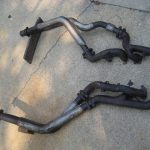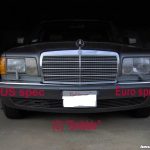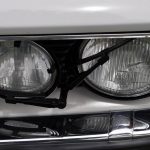If you spend any time with European cars, you may have heard a few terms that make you scratch your head. Euro-Spec or ROW are two identifiers that signify quite a few differences between cars, but they don’t exactly explain what those differences are unless you are a particularly studious enthusiast. You may have noticed drastic price differences between what otherwise look like basically identical cars when the more expensive one says something like “Gray Market,” “Euro-Spec,” or “ROW” attached to its name. This article will help you understand what the basic differences are between European cars from the 1970’s, 80’s, and 90’s that were sold in America versus those sold in other markets and most importantly, why you should know what it all means.
Typical differences between USA Spec and Euro-Spec or ROW
Bumpers: You don't have to be an enthusiast to notice the difference in bumpers between the US Spec and the Euro-Spec cars, particularly in the 70's and into the 80's. The USA DOT regulations required a 5mph bumper that absorbed shock without allowing damage to the body of the vehicle. This required specification forced German engineers to install much larger bumpers with much more depth on their vehicles that were meant for our market. As well, different bumper shocks to absorb those parking lot fender benders were added that further detracted from the beauty of European cars. These USA bumpers became commonly known as 'diving board bumpers' because they look like you could stand on them with your size 14 shoe and springboard from them to a perfect backflip. Sadly, these regulations did little to provide the safety of passengers. An educated guess could be that these bumpers were more to appease insurance companies who didn't want large claims for parking lot incidents. As time progressed, regulations in Germany began to match the rest of the world. This shift brought their standards closer to the United States' standards, so car manufacturers became better at meeting compliance while they were still able to maintain the sleek slim look. By the 2000's, differences were minor, if any. Today, there are no visual differences under most circumstances, but there are still variations between engines and body styles offered.













